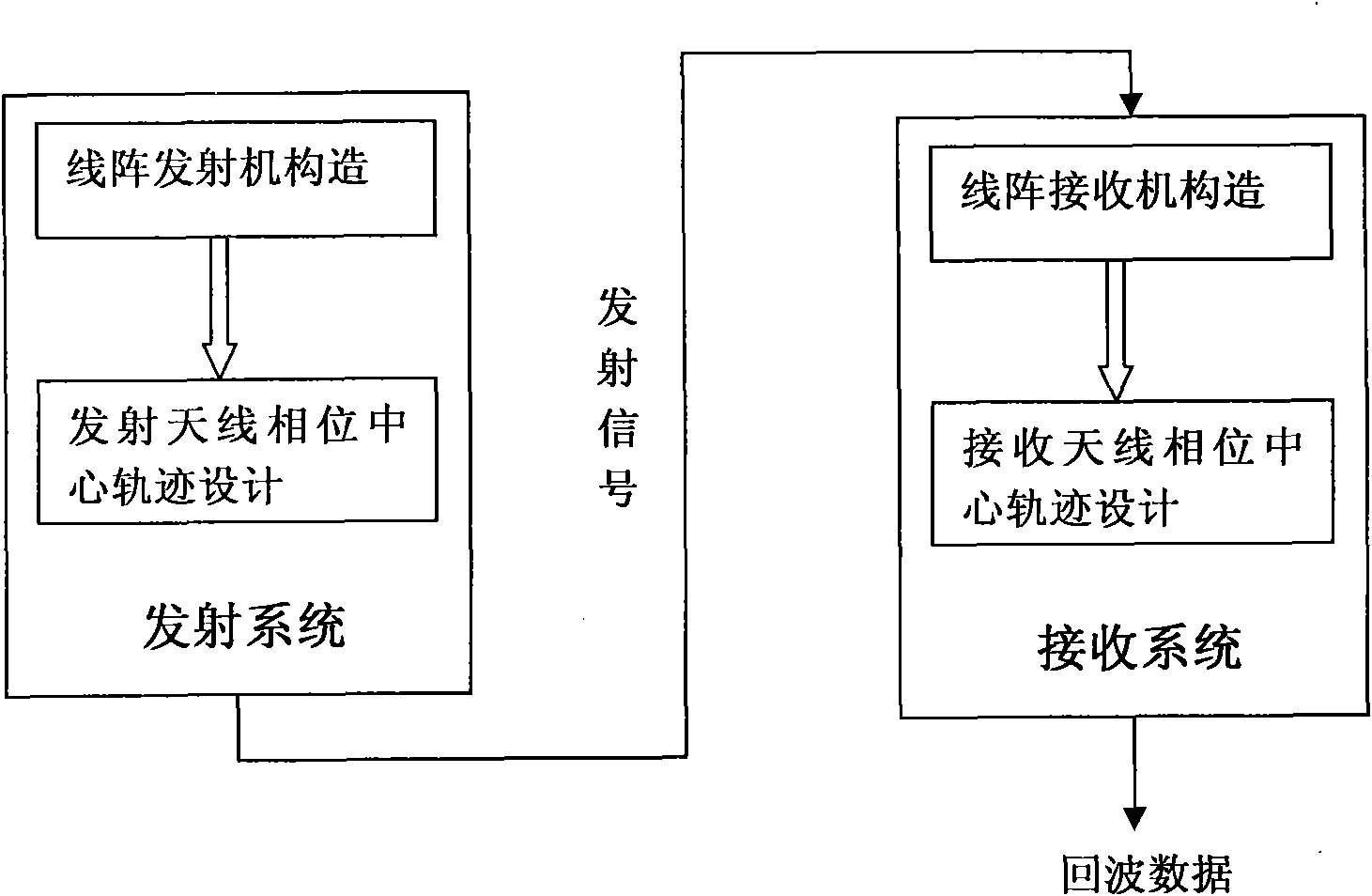Method for constructing two-station two-line array three-dimensional imaging synthetic aperture radar system
A synthetic aperture radar and three-dimensional imaging technology, which is applied in the field of radar imaging and synthetic aperture radar imaging, can solve the problems of difficulty in obtaining the flight path, large amount of data processing, low control precision, etc. Effect of Accuracy Improvement
- Summary
- Abstract
- Description
- Claims
- Application Information
AI Technical Summary
Problems solved by technology
Method used
Image
Examples
Embodiment Construction
[0058] The present invention mainly uses the simulation experiment method to verify the feasibility of the system model, and all steps and conclusions are verified correctly on VC++ and MATLAB7.0. The specific implementation steps are as follows:
[0059] Step 1. Construction of the line array transmitter
[0060] The linear array transmitter on the launch platform of the dual station dual linear array 3D synthetic aperture radar system includes the following parts: a transmitter, a control switch, 1000 feeders and 1000 linear array feeders. Its system block diagram is attached figure 1 As shown, the control switch is connected to the receiver, the control switch is connected to 1000 line array feeders through 1000 feeders, and the length of the line array is 30. Within a flight aperture, the control switch controls the positions of the feeds that are turned on for each slow time n, n=1...2048, and only one feed is turned on for each slow time n. Each linear array feeder ma...
PUM
 Login to View More
Login to View More Abstract
Description
Claims
Application Information
 Login to View More
Login to View More - R&D
- Intellectual Property
- Life Sciences
- Materials
- Tech Scout
- Unparalleled Data Quality
- Higher Quality Content
- 60% Fewer Hallucinations
Browse by: Latest US Patents, China's latest patents, Technical Efficacy Thesaurus, Application Domain, Technology Topic, Popular Technical Reports.
© 2025 PatSnap. All rights reserved.Legal|Privacy policy|Modern Slavery Act Transparency Statement|Sitemap|About US| Contact US: help@patsnap.com



